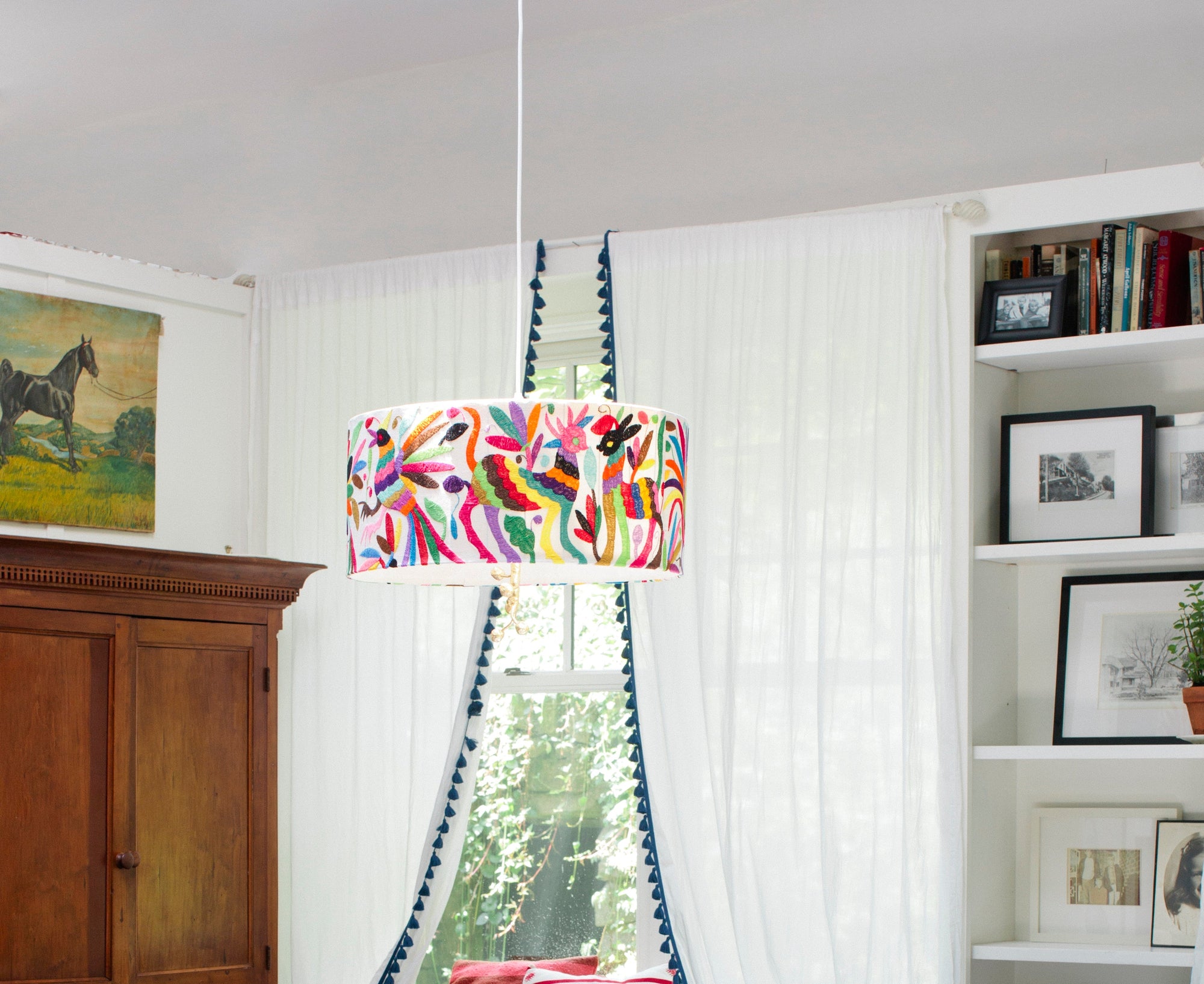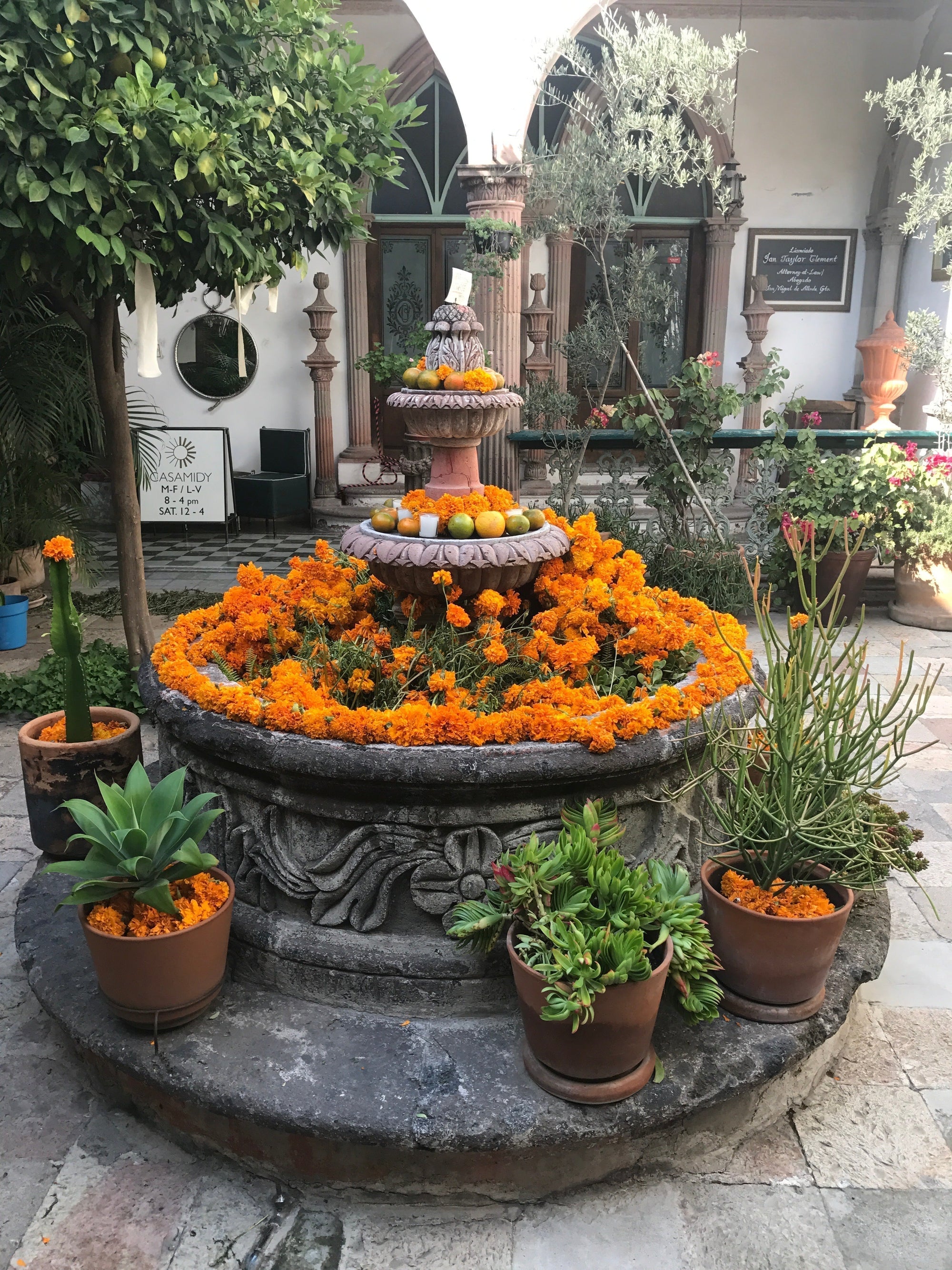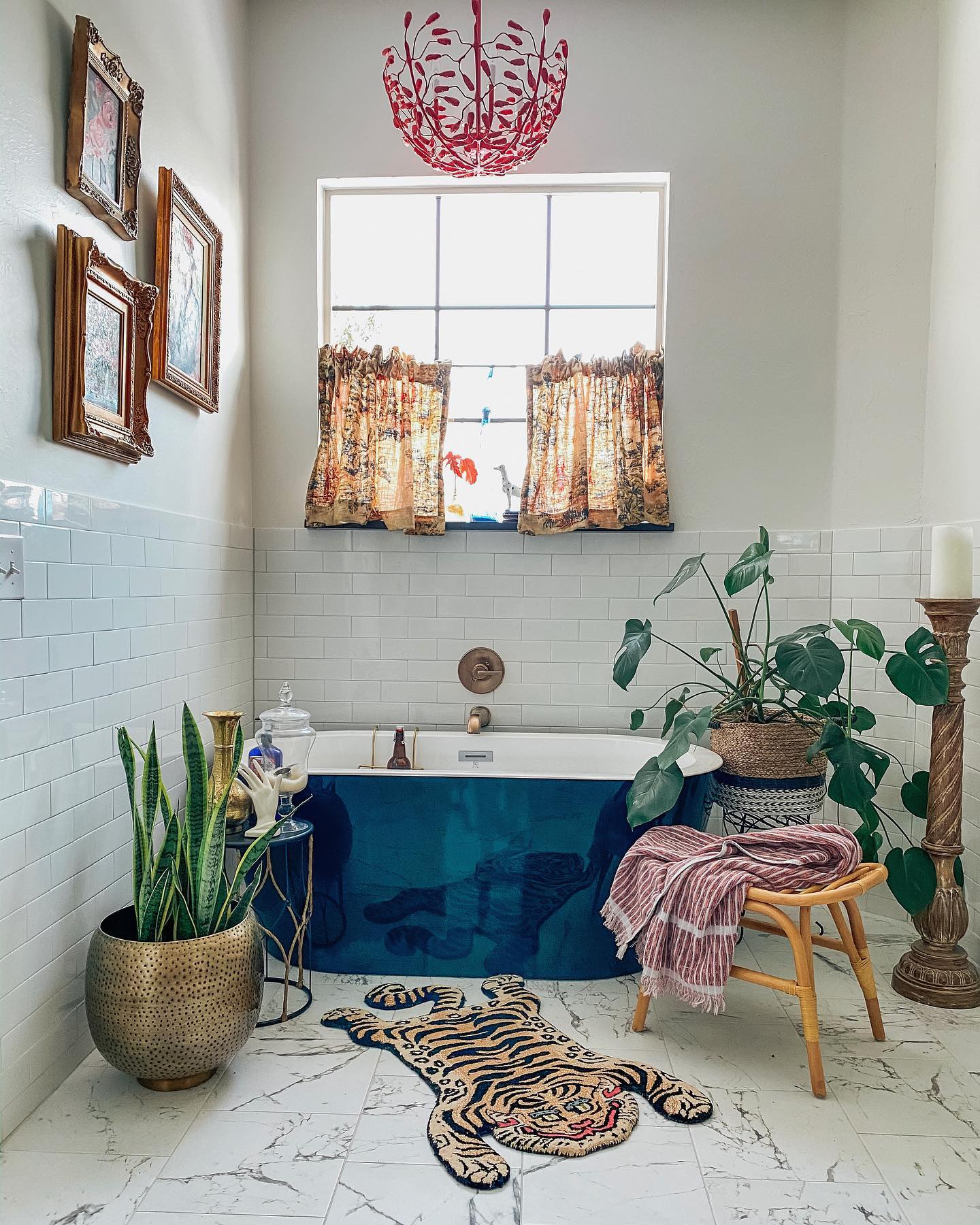We can use a little color in our lives and we thought, "What better way to celebrate color than looking at Otomi fabrics!" After all, Otomi was basically created to be adored by the whole Stray Dog team... So let's take a look at the meaning behind this beautiful handmade embroidery
Also called Tenangos, this tradition of stitching was born in the Hidalgo region of Mexico and has been passed down for centuries. The embroidery style we see today grew from an increased need for income after Mexico suffered severe droughts in the 1960s.

Left: Stray Dog Designs Pato Otomi Pendant designed by Jane Gray | Right: St. Frank Tablecloth featured in Vogue
The Symbolism of Otomi Imagery
The designs are inspired by primitive cave drawings and mostly depict symbols of native flora and fauna. Here's what some of the imagery means:
- Animals (armadillos, roosters, squirrels, deer): often thought to be bearers of wisdom and important news
- Stars: four and eight pointed stars represent the cardinal directions
- Flowers: can represent nature and fertility
- Other symbols may also represent ancient healing ceremonies, fertility, spirits, migration, and nature

The Process of Creating Otomi Fabrics
- Artisans cut the fabric down to a specific sized based on the project
- The artisan then hand traces unique designs onto the fabric
- The piece is embroidered using a "blind stitch" technique. The stitches are hidden on the front and inside of the fabric
- The piece is then washed to erase the drawing
- Then the piece is ironed and if necessary, the hemline is stitched by hand or with a sewing machine
More Fun Facts about Otomi Embroidery
- Native artisans draw all of the patterns by hand, never using stencils
- Some of the abstract shapes you see in the designs are based off of themes and motifs that date back hundreds of years
- The designs are embroidered with a special kind of satin stitch that can only be seen on the front side
- Some larger Otomi pieces can take up to a year to complete
- Going even further back, this style was passed down from the Spaniards when they began to colonize in the Hidalgo region
- Originally, Otomi pieces were hand embroidered on ivory muslin by the artisans. The practice of using white cotton has evolved from the growing popularity of the designs
- Local shamans were some of the first artisans to begin this practice
Admiration and Appropriation
We can't celebrate the beauty and craftsmanship of this tradition without bringing up the increased appropriation (and sometimes outright plagiarism) of their patterns, imagery, and style. This has been at the center of disputes with major companies like Nestlé, Carolina Herrera, and Benetton. (Our designer, Jane Gray wrote an article about Otomi Copy Cats back in the day, too)
This centuries-old practice is steeped in history, talent, and tradition. It's important for us to pay respect to these artisans and ensure they are paid fairly for their inimitable work.
For these artisans, making a living is more important than adding their mark to the fashion or decor industries. "Those who do the heavy labor of needlework earn less than $10 to embroider a square about the size of a small cushion."

Stray Dog + Otomi
In 2010, we decided to embark on a journey to include Otomi embroidery in our collection. At the time, it was an arduous decision to invest time and money in educating our audience on the amount of work involved and the rich history behind the designs. We even had the pleasure of taking a trek on the winding dirt roads through the Sierra Nevada Mountains to source production and ensure that the Otomi people would directly profit from their handiwork.
Despite the logistical challenges of working with indigenous people, these designs became quickly loved. We are humbled and proud that the Otomi people have partnered with us to include these pieces in our line. We hope each day to promote and celebrate their art while providing and preserving their jobs and income.

Left: Stray Dog Designs Otomi Floor Lamp in a room designed by Kemble Interiors | Right: Our Paulina Otomi Pendant
Our Stray Dog Otomi Pieces
Otomi Floor Lamp - Multi-Colored
Resources on Otomi
Otomi Embroidery by Inspiration Studios
Otomi Embroidery by Otomi Mexico
6 Things to Know About Otomi Embroidery by Atlanta Magazine
History of a Trend: Otomi Embroidery and Patterns by Wondrous Paths
This Mexican Village's Embroidery Designs are Admired (and Appropriated) Globally



